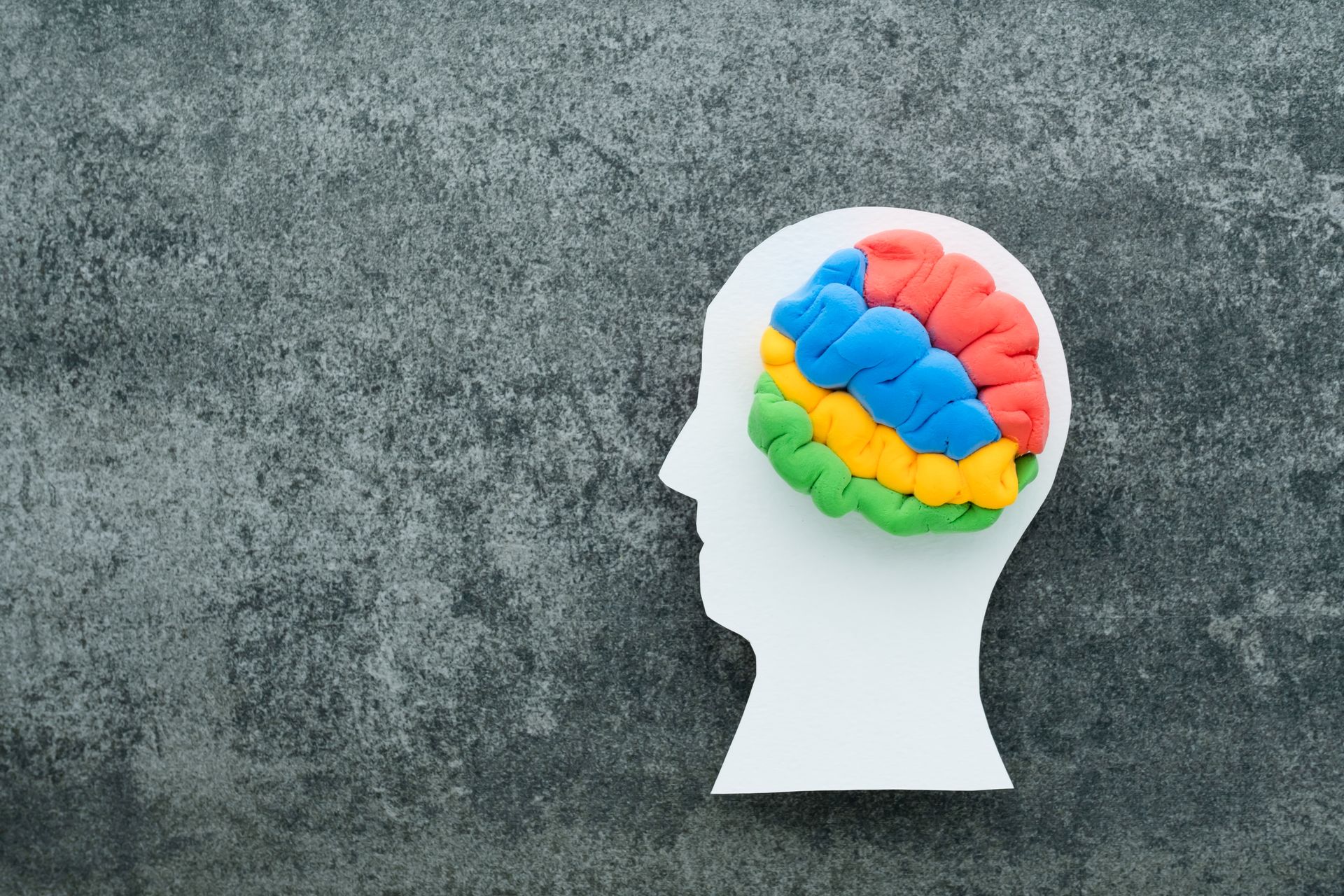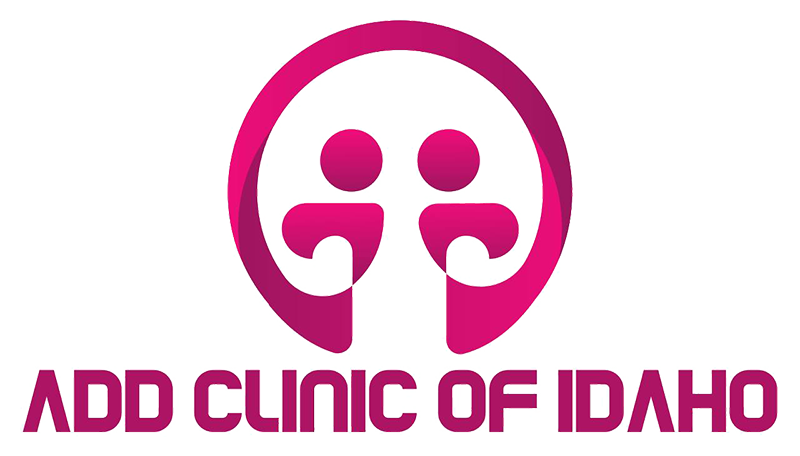Attention Deficit Disorder (ADD) rarely exists in isolation. Many individuals with ADD experience co-occurring conditions such as anxiety, depression, learning disabilities, or autism spectrum disorder (ASD). Overlapping symptoms can sometimes make it challenging to identify the root cause of difficulties in daily life. However, just because symptoms seem to blend together does not mean proper diagnosis and treatment should be overlooked. In fact, comprehensive testing is more important than ever for effective care.
Why Do Symptoms Overlap?
The brain is complex, and many mental health conditions share common traits. For example, both ADD and anxiety can lead to difficulty focusing. Depression and ADD can both contribute to low motivation. Sensory sensitivities seen in ASD may also be present in individuals with ADD. Without thorough testing, it
s easy to misattribute symptoms to the wrong condition or miss an important underlying issue.
A study published in The Journal of the American Academy of Child & Adolescent Psychiatry found that up to 40% of individuals with ADD also have an anxiety disorder, and nearly 30% experience depression (Pliszka, 2015). These statistics highlight why a nuanced approach to diagnosis is critical. Treating one condition while ignoring another can result in incomplete relief or worsening symptoms.
The Importance of Comprehensive Testing
Even if symptoms seem obvious, a detailed evaluation by a professional can clarify the full picture. Professional testing and assessments help distinguish between overlapping conditions and guide personalized treatment plans. The American Academy of Pediatrics (AAP) emphasizes that ADD should not be diagnosed based on symptoms alone but through comprehensive evaluations, including input from parents, teachers, and clinicians (Wolraich et al., 2019).
Accurate diagnosis matters because treatment approaches can vary widely. A child with ADD and anxiety may need a different medication or therapy strategy than a child with ADD alone. Similarly, an adult struggling with focus due to untreated depression will not benefit from stimulant medication alone.
Taking the Next Step
If you or your child are struggling with focus, impulsivity, or emotional regulation, don't dismiss the importance of proper testing. Even when symptoms overlap, a careful diagnosis leads to more effective treatment and better outcomes. Our clinic specializes in comprehensive evaluations to ensure you receive the right care tailored to your unique needs. Contact us today to schedule an assessment and take the first step toward clarity and effective treatment.
References:
- Pliszka, S. R. (2015). Comorbidity of attention-deficit/hyperactivity disorder with psychiatric disorder: An overview. Journal of the American Academy of Child & Adolescent Psychiatry, 44(5), 406414.
- Wolraich, M. L., et al. (2019). Clinical practice guideline for the diagnosis, evaluation, and treatment of attention-deficit/hyperactivity disorder in children and adolescents. Pediatrics, 144(4), e20192528.

October is ADHD Awareness Month, a national campaign led by the ADHD Awareness Month Coalition with partners such as CHADD and ADDA. The goal is simple and urgent: replace myths with facts and help more people get timely, evidence-based care. ADHDAwarenessMonth 2025+2ADDA+2 What ADHD is—and isn’t. ADHD is a neurodevelopmental condition that can affect attention, working memory, organization, and impulse control. It often begins in childhood and can persist into adulthood, shaping how we learn, work, and relate to others. Many adults recognize symptoms only later in life—sometimes after a child in the family is evaluated. Authoritative public-health sources (CDC, NIMH) emphasize that ADHD is common and treatable. CDC+1 Why a real evaluation (“testing”) matters. An ADHD assessment is more than a quick checklist. Best practice includes a thorough clinical history across settings (home/school/work), validated rating scales from multiple informants, and careful screening for conditions that can mimic or co-occur with ADHD (anxiety, depression, sleep disorders, learning differences). For children and adolescents, the American Academy of Pediatrics provides detailed guidance on diagnosis and treatment. Adults benefit from a similarly comprehensive approach adapted to work and home demands. Pediatrics Treatment works —and it’s not one-size-fits-all. Evidence-based options include behavior therapy/coaching, skills-based psychotherapy (e.g., CBT for ADHD), school or workplace accommodations, and medications (stimulant and non-stimulant). Care plans are individualized and often combine strategies for the best results. Public-health guidance from the CDC and NIMH underscores that treatment can reduce symptoms and improve functioning across the lifespan. CDC+1 Four practical steps you can take this month: Start the conversation. Ask your primary care clinician or a mental-health professional about an ADHD evaluation; bring real-world examples (missed deadlines, distractibility while driving, school feedback). Pediatrics Explore treatment choices. Discuss behavior therapy, coaching/CBT, and medication options—and how they fit your goals. CDC+1 Set up supports at school/work. Request reasonable accommodations (structured deadlines, written instructions, reduced-distraction testing). National Institute of Mental Health Use reliable resources. The ADHD Awareness Month site, CHADD, and ADDA host toolkits, webinars, and local supports throughout October. ADHDAwarenessMonth 2025+2ChADD+2 Awareness month is a great time to move from “maybe” to action. A thoughtful evaluation and the right mix of tools can change the trajectory at school, at work, and at home. References ADHD Awareness Month Coalition. “ADHD Awareness Month.” (campaign hub with resources and events). ADHDAwarenessMonth 2025 Centers for Disease Control and Prevention (CDC). “Treatment of ADHD.” (overview of evidence-based treatments for children and adults). CDC American Academy of Pediatrics (AAP). Clinical Practice Guideline for the Diagnosis, Evaluation, and Treatment of ADHD in Children and Adolescents. (Pediatrics, 2019). Pediatrics National Institute of Mental Health (NIMH). “ADHD—What You Need to Know.” (symptoms, diagnosis, treatments). National Institute of Mental Health

October marks Domestic Violence Awareness Month, a time to name the problem and connect people to help. Domestic violence (intimate partner violence, or IPV) includes patterns of physical harm, sexual violence, stalking, or psychological aggression. It affects millions and carries serious health consequences—from injuries to depression, PTSD, and chronic disease. The CDC’s national data underscore the scope and impact. CDC Health care teams have a role, too. The U.S. Preventive Services Task Force recommends clinicians screen women of reproductive age (including during pregnancy and postpartum) for IPV and connect people who screen positive to services—an evidence-based step shown to improve safety and well-being. USPSTF If you are concerned about your safety—or are supporting someone who is—consider these actions: Talk to a clinician you trust. You can say, “I’m not sure I’m safe at home.” Your provider can screen confidentially, document injuries, and refer you to advocates and legal resources. (If using a shared phone/portal, ask about private contact methods.) Create a safety plan. Identify safe rooms/exits, pack a small “go bag” (IDs, medications, keys, cash, copies of important documents), and choose a code word with a friend to signal you need help. Use confidential help lines. The 988 Lifeline supports people in emotional crisis. For domestic violence–specific support and local shelters, call 1-800-799-SAFE (7233) or chat at thehotline.org. Protect your digital trail. Use a device your partner can’t access if possible. Clear browser histories, use private browsing, and consider a new email for communications with advocates or clinicians. Know emergency options. If you fear immediate harm, call 911. Ask about protective orders, victim advocacy, and medical forensic exams where applicable. If you’re a friend or colleague : Believe them, avoid blaming questions, offer rides/childcare, and help gather essentials. Safety—and the survivor’s choices—come first. Domestic violence is common, serious, and preventable. Screening and support save lives, and confidential resources are available even if you’re not ready to leave. You are not alone. CDC+1

A new national report from Mental Health America places Idaho 48th overall for mental health, reflecting a combination of high need and limited access to care. The ranking comes from MHA’s annual State of Mental Health in America analysis, which aggregates 17 indicators spanning prevalence, insurance coverage, youth depression, and provider availability. Mental Health America Local coverage confirms Idaho’s position in this year’s release. KBOI Rankings are not destiny—but they do spotlight gaps Idahoans experience every day: long waitlists, workforce shortages, and rural access hurdles. MHA’s framework helps explain why states can fall behind even when communities work hard: it measures both how many people are struggling and how easy it is to get timely, affordable care. Mental Health America If you or someone you love needs support, here are practical steps you can take today: Start with one conversation. Talk to your primary care clinician about mood, sleep, anxiety, or substance use. Ask for a screening (PHQ-9 for depression, GAD-7 for anxiety) and referrals that fit your location and insurance. Use fast, free crisis support. Call or text 988 to reach the Suicide & Crisis Lifeline. They can de-escalate, connect you to local resources, and advise loved ones on how to help. Ask for access options. Many practices can shorten waits with telehealth, group therapy, collaborative care (therapy + meds coordinated with your PCP), or interim check-ins with nurses/behavioral health coaches. Clarify coverage. Contact your health plan for in-network therapists and psychiatrists; ask about telehealth, out-of-network benefits, and any cost-sharing. If you’re uninsured or underinsured, request sliding-scale or charity rates from clinics. Lean on supports you trust. Tell a friend or family member, or connect with community groups and faith communities. Bring someone to appointments if that feels helpful. Keep a simple plan. Write down your top 3 coping tools (walk, breathe, call a friend), your provider’s number, and 988. Put it in your phone notes. Idaho’s ranking is a call to action—for policymakers and health systems, yes, but also for each of us to normalize care-seeking and help one another navigate to support. When people get the right care at the right time, outcomes improve—and so do communities.

Every September, communities across the country come together for National Suicide Prevention Awareness Month. This month is dedicated to raising awareness, reducing stigma, and encouraging open conversations about mental health and suicide prevention. Why This Month Matters Suicide is a leading cause of death in the United States. In 2022 alone, more than 49,000 Americans died by suicide ( CDC ). Suicide can affect anyone—people of all ages, backgrounds, and experiences. Many who die by suicide struggle with depression, anxiety, or other mental health conditions, often without adequate support or treatment (NIMH). By learning the warning signs, reaching out to loved ones, and connecting people to help, we can save lives. How You Can Help Know the warning signs: Talking about wanting to die, withdrawing from friends, changes in mood or behavior, or increased use of alcohol or drugs are all potential warning signs. Check in with loved ones: If you’re worried about someone, ask how they’re feeling and listen without judgment. Encourage professional support: Mental health treatment works. Help friends and family find a therapist, doctor, or support group. Share crisis resources: Let people know they can call, text, or chat 988 to reach the Suicide and Crisis Lifeline anytime, 24/7 ( 988lifeline.org ). You’re Not Alone If you or someone you care about is struggling, there is help and hope. Talking about suicidal thoughts does not make things worse—listening and showing support can be lifesaving. Resources 988 Suicide and Crisis Lifeline — call, text, or chat 988 anytime SAMHSA Suicide Prevention Resources — Visit here CDC Suicide Prevention Facts — Visit here Our Commitment We believe that mental health care is health care. This September—and every month—we’re committed to supporting individuals, families, and communities by providing compassionate, evidence-based care.

As the back-to-school season approaches, many mothers brace themselves—not just the kids. Beneath the excitement of new backpacks and first-day photos, a quieter emotional struggle often unfolds. Moms can find themselves wrestling with waves of anxiety and even depression as routines shift and children return to school. The pull of separation anxiety isn't just a childhood phenomenon. Research shows that mothers with underlying anxiety or depression can find life transitions—like the start of school—particularly triggering. Maternal mental health is closely linked to parenting stress, and anxiety can heighten concerns about safety, performance, and social adjustment (The Independent, 2021). Moreover, maternal depression and anxiety have been shown to impact mother–child interactions and are associated with increased emotional and behavioral difficulties in children (BMC Public Health, 2024). These challenges are not limited to mothers of young children. While postpartum depression affects roughly one in seven new mothers, with nearly half remaining undiagnosed, its effects can persist well beyond infancy (BMC Public Health, 2024). As children grow, milestones like starting school can resurface feelings of loss, inadequacy, or uncertainty. The start of a school year also disrupts household rhythms. Homes that once thrived on all-day togetherness suddenly fall silent, and moms may find themselves second-guessing: Is my child safe? Am I doing enough? These thoughts can spiral into persistent worry or low mood, especially for those already vulnerable to anxiety or depression. External pressures—work schedules, social comparisons on social media, and guilt over “letting go”—can compound these emotions. Even routine school events like drop-off or parent–teacher conferences can carry unexpected emotional weight, sometimes triggering tears or feelings of isolation. What Can Help? Normalize the feelings : Recognizing that many mothers experience similar emotions can help reduce isolation. Reach out: Schedule check-ins with other parents. Peer support can help regulate stress. Create rituals : Daily “share your day” traditions strengthen connection and reduce anxiety. Seek professional help when needed : Persistent sadness, anxiety, or functional impairment are valid reasons to speak with a healthcare provider. Sending a child back to school may be a rite of passage for kids, but for mothers, it can be laden with emotions. Acknowledging those feelings—and treating them with care—can make all the difference in easing the transition from summer freedom to the structure of the school year. References : The Independent. (2021). Parents’ anxiety about children starting school is real – and it’s on the rise. Retrieved from https://www.the-independent.com/life-style/health-and-families/anxiety-children-parents-school-skip-health-b2807905.html BMC Public Health. (2024). Prevalence and risk factors of maternal depression and anxiety. https://bmcpublichealth.biomedcentral.com/articles/10.1186/s12889-024-18502-0

As the back-to-school season approaches, many parents are focused on school supplies, schedules, and routines. But for children and teens struggling with attention, focus, or behavior regulation, it’s also the ideal time to consider evaluation for Attention-Deficit Disorder and Attention Deficit Hyperactivity Disorder (ADD / ADHD). ADD / ADHD affects approximately 9.8% of children and adolescents in the U.S., with symptoms often becoming more noticeable or problematic during transitions—such as the return to school after summer break (Centers for Disease Control and Prevention, 2023). These symptoms may include difficulty focusing, excessive talking or interrupting, trouble following instructions, and poor time management. Early identification through formal ADD / ADHD testing can make a significant difference in a child’s academic and social development. Comprehensive testing typically includes clinical interviews, behavior rating scales completed by parents and teachers, and—when appropriate—computerized attention assessments or cognitive testing. When a diagnosis is confirmed, evidence-based treatment can begin. Most treatment plans include a combination of behavioral therapy, academic accommodations (such as 504 plans or IEPs), parent coaching, and sometimes medication. According to the American Academy of Pediatrics, treatment that includes both behavior therapy and, when indicated, stimulant or non-stimulant medications is the most effective approach for school-aged children (AAP, 2019). Starting the evaluation and treatment process before school ramps up allows families, educators, and providers to collaborate on support strategies early, and preventing academic frustration and behavioral conflicts from compounding over time. It also helps ensure that any necessary accommodations are in place before performance challenges lead to lower grades or reduced self-esteem. If you’ve noticed signs of inattention, impulsivity, or hyperactivity in your child, don’t wait. Testing and treatment during the early weeks of the school year can provide clarity, structure, and a path forward for your child to thrive—both in and out of the classroom. References : 1)Centers for Disease Control and Prevention. (2023). Data and Statistics About ADHD. Retrieved from: https://www.cdc.gov/ncbddd/adhd/data.html 2)American Academy of Pediatrics. (2019). Clinical Practice Guideline for the Diagnosis, Evaluation, and Treatment of ADHD in Children and Adolescents. Pediatrics, 144(4), e20192528. https://doi.org/10.1542/peds.2019-2528

As the seasons shift and spring emerges in full bloom, many people experience a boost in energy and focus. With longer daylight hours and warmer weather, spring can bring a sense of clarity and motivation that' s often missing during the darker winter months. For individuals struggling with attention-deficit disorder (ADD) or attention-deficit/hyperactivity disorder (ADHD), this seasonal shift may temporarily mask or even amplify symptoms making spring an ideal time to seek testing and treatment. A Seasonal Shift in Focus Sunlight is known to influence brain chemistry, especially through its impact on serotonin and dopamine two neurotransmitters that play a major role in attention, motivation, and emotional regulation. Increased daylight and activity can sometimes help individuals with ADD feel more alert and productive. However, this change is often short-lived and doesn' t replace the need for professional care. The Hidden Struggles of Spring While spring can be energizing for some, it may also highlight underlying attention challenges. Teachers and parents may notice students struggling to stay focused as the school year enters its final months. Adults might find their productivity dipping even with increased energy, or feel overwhelmed trying to catch up with responsibilities. If these patterns feel familiar, it could be time to consider a formal evaluation for ADD/ADHD. Why Testing Matters Now Spring provides a fresh opportunity to gain insight into your mental health and cognitive functioning. Testing for ADD is non-invasive and can help uncover patterns that might explain forgetfulness, distractibility, poor time management, or emotional dysregulation. Early diagnosis is key especially for those whose symptoms were overlooked during childhood or have evolved with age. Treatment Brings Structure to the Season If ADD is diagnosed, treatment options can be life-changing. These may include medication, therapy, or lifestyle changes that support structure, planning, and sustained focus. When combined with the natural benefits of spring more light, more movement, and better sleep treatment can help individuals thrive long after the season changes. Take the First Step If you or your child struggle with attention, focus, or follow-through, spring is the perfect time to take action. Reach out to a provider, schedule an assessment, and find out whether ADD testing and treatment can make this season not just better but more manageable, focused, and fulfilling.

Daylight savings time (DST) is a widely practiced time adjustment aimed at maximizing daylight hours. However, the biannual shift can have significant implications for mental health, particularly for individuals receiving mental health care. The disruption to circadian rhythms, sleep patterns, and overall well-being necessitates that mental health professionals and patients alike prepare for the potential psychological effects. Circadian Rhythms and Sleep Disruptions One of the most immediate effects of DST is its disruption to circadian rhythms the internal clock that regulates sleep-wake cycles. The sudden shift, even if only by an hour, can lead to sleep deprivation, increased fatigue, and mood instability. Research has shown that sleep disturbances are directly linked to higher rates of anxiety, depression, and even suicidal ideation (Harrison, 2013). Mental health care providers often see an uptick in symptoms among individuals with pre-existing conditions following the transition. Seasonal Affective Disorder (SAD) and Mood Changes The fall transition into standard time results in shorter daylight hours, exacerbating symptoms of Seasonal Affective Disorder (SAD), a type of depression that occurs cyclically with seasonal changes. The abrupt reduction in natural light exposure can lead to increased lethargy, decreased motivation, and mood imbalances. A study by Wehr et al. (2001) found that individuals affected by SAD are particularly vulnerable to the negative effects of DST. For patients prone to seasonal depression, mental health practitioners often recommend light therapy, adjusted medication schedules, and structured daily routines to mitigate these effects. Impacts on Mental Health Treatment Mental health care providers may also notice changes in patient engagement and treatment effectiveness during the DST transition. Sleep disruptions can decrease cognitive function, making it harder for patients to engage in therapy, retain information, and adhere to treatment plans. Additionally, the loss of daylight hours in the evening can reduce opportunities for outdoor activities, social interactions, and exercise factors crucial for maintaining mental well-being. Strategies for Mitigation To counteract the negative effects of DST, mental health professionals suggest several strategies: Gradually adjusting sleep schedules a few days before the time change Prioritizing natural light exposure during daylight hours Maintaining consistent routines to support emotional stability Encouraging patients to track their mood and symptoms for early intervention As research continues to highlight the mental health impacts of DST, mental health professionals must take proactive steps to support their patients through these transitions. References Harrison, Y. (2013). 'The impact of sleep loss on cognitive performance and mood.' Sleep Medicine Clinics, 8(4), 517-527. Wehr, T. A., Sack, D. A., & Rosenthal, N. E. (2001). 'Seasonality and affective disorders.' Psychiatric Clinics of North America, 24(2), 275-292.

In recent years, the gut-brain connection has gained significant attention in the world of mental health, and 2025 is no exception. Emerging research suggests that the gut microbiome—the diverse community of microorganisms living in our digestive tract—may play a pivotal role in neurodevelopmental conditions, including Attention Deficit Hyperactivity Disorder (ADHD). 1. Understanding the Gut-Brain Connection Gut-brain communication links the central nervous system with the gastrointestinal tract. This connection operates through neural pathways, hormones, and immune system responses. It’s now well-established that gut health can influence brain function, affecting mood, cognition, and behavior. 2. The Microbiome's Influence on ADHD Recent studies indicate that individuals with ADHD often have distinct gut microbiota profiles compared to those without the disorder. Research published in Frontiers in Psychiatry (2024) found that certain bacterial strains, such as Bifidobacterium and Lactobacillus, may impact neurotransmitter activity, including dopamine and serotonin—both crucial in ADHD symptom regulation. 3. Diet, Inflammation, and Symptom Management Diet plays a significant role in shaping the gut microbiome. High-sugar, low-fiber diets commonly linked to ADHD symptoms can contribute to gut dysbiosis (an imbalance in gut bacteria), potentially exacerbating attention and behavioral issues. Anti-inflammatory diets rich in fruits, vegetables, whole grains, and omega-3 fatty acids have shown promise in supporting cognitive health. A 2025 review in The Journal of Child Psychology and Psychiatry highlights that reducing processed foods and incorporating prebiotics and probiotics may help manage ADHD symptoms. While not a standalone treatment, these dietary interventions can complement traditional therapies. 4. Probiotics and Prebiotics in ADHD Research Probiotics (beneficial bacteria) and prebiotics (compounds that feed good bacteria) are at the forefront of ADHD-related gut health research. Clinical trials published in Nutritional Neuroscience (2025) suggest that probiotic supplementation may improve attention span and reduce hyperactivity in some individuals with ADHD, though more extensive studies are needed to confirm these effects. Final Thoughts While the gut-brain connection offers exciting possibilities for understanding and managing ADHD, it’s important to approach these findings with balanced optimism. Gut health interventions should be viewed as complementary to, not replacements for, evidence-based ADHD treatments. As research continues to evolve, integrating nutritional support with traditional therapies could offer more holistic care for individuals with ADHD.

The start of a new year often brings a sense of renewal and motivation to set goals for personal growth. For individuals with ADHD, creating resolutions tailored to their unique challenges can significantly improve mental health and overall well-being. This year, consider setting actionable goals that prioritize emotional balance, focus, and self-care to thrive in 2025.

